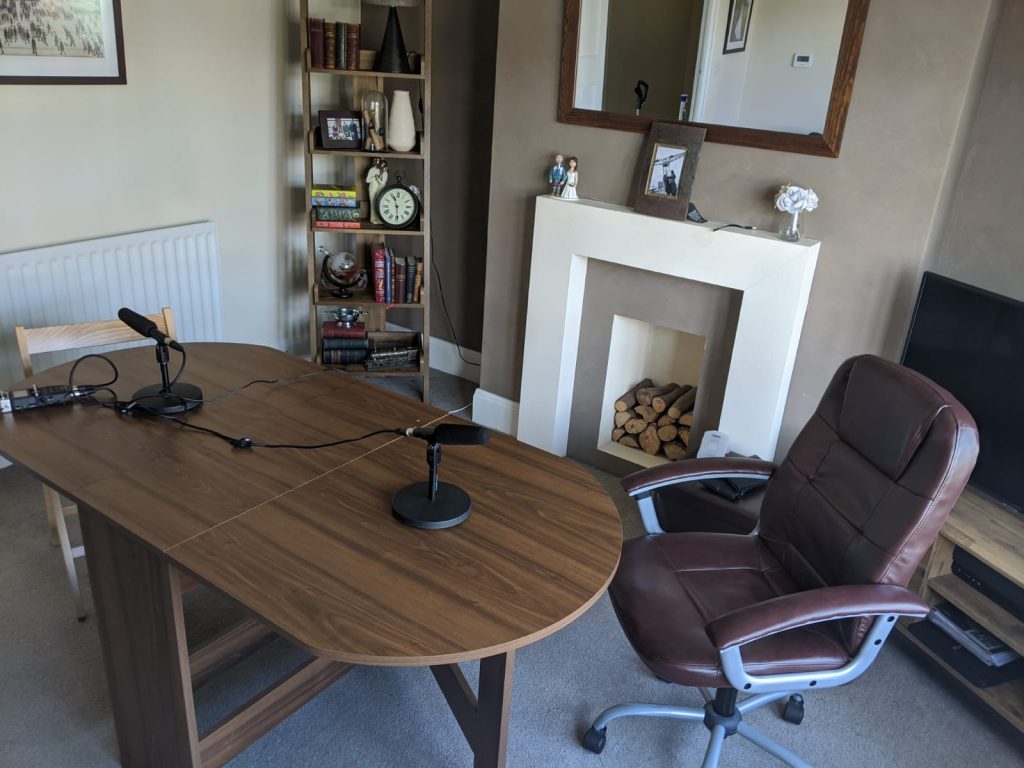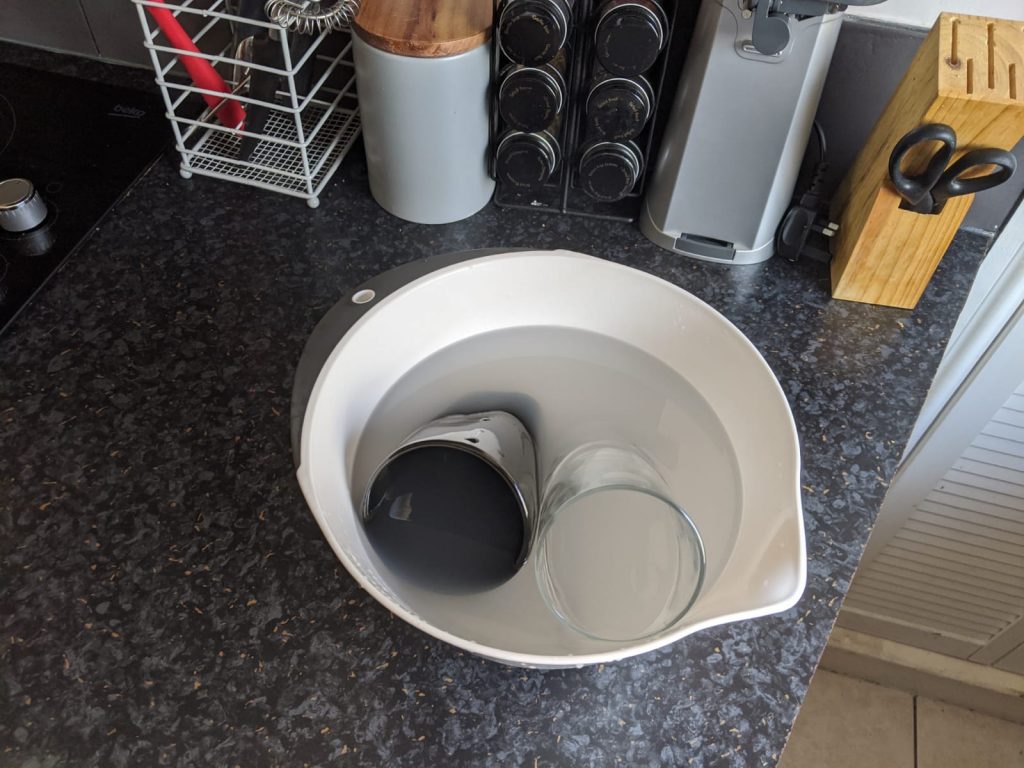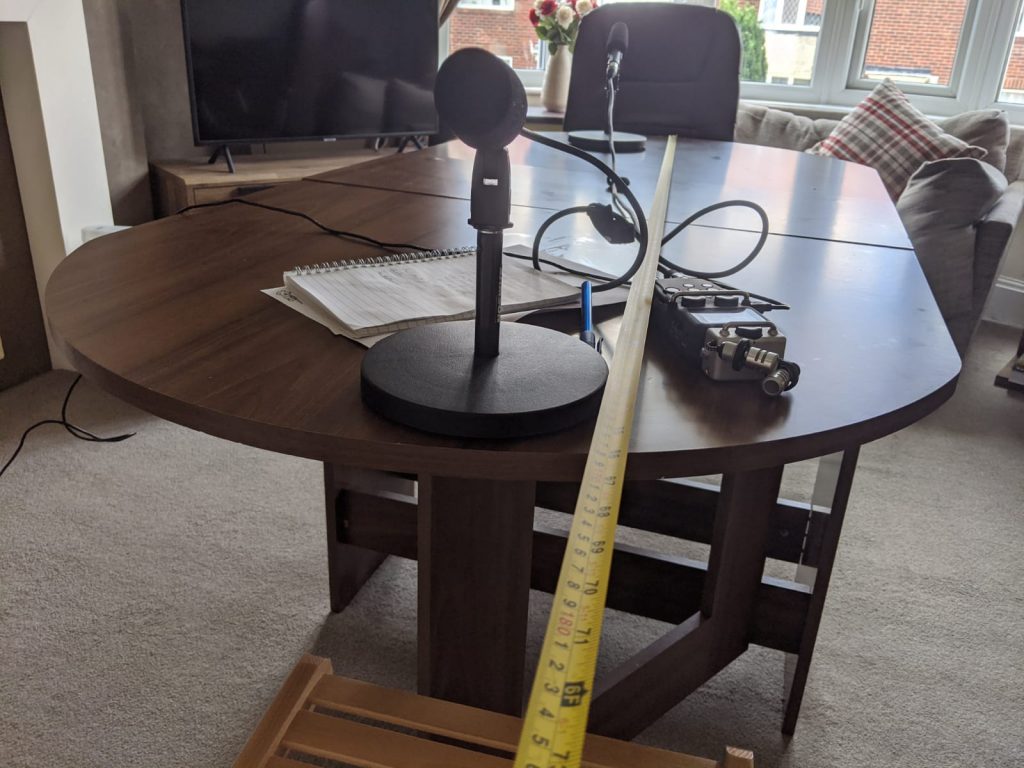With Government guidelines changing, indoor gatherings and meetings are now possible, meaning that oral historians are once again able to conduct face-to-face interviews. However, the interview situation in August 2020 is vastly different from any time before. What impact does this have on the interview as an event, and what steps should oral historians take to ensure the safety and wellbeing of everyone invovled? In this Lug post, Andy Clark discusses his approach and experience to conducting in-person interviewing in the ‘Covid-19 era’.
‘It’s my preference that you come to my house to conduct the interview’. I uttered this sentence during a telephone call with a possible interviewee last week, a sentence that I imagine few oral historians have said, and one that I could not imagine saying only a few months ago. As oral historians, we place significant emphasis on ensuring the comfort of the interviewee and a key component of this is allowing them the agency to choose interview location (where possible). The options usually include their home, a public place, or a space in a university/office. Ensuring the interviewee’s comfort and establishing rapport is the aspect of my research that I take most seriously, to the extent that I don’t like using mains power when interviewing in someone’s home in case they’re irked at the use of electricity, or it requires them to sit somewhere that isn’t their usual sitting place. But in the 189 days since I last conducted an interview, our world has changed in ways that were scarcely imaginable, and my practice has had to change as well.
In this piece, I reflect on how I approached my first in-person interview since February, and outline the procedures and protocols that I put in place to ensure the safety and wellbeing of everyone involved. As alluded to above, my interview today was conducted in my own home, and I want to outline what this has meant for me as a researcher, and give a ‘how-to’ guide for doing so safely.*
The reason for choosing to interview in my house is intrinsically related to my desire to place as little burden as possible on an interviewee. The British Library/Oral History Society has put together an incredibly useful document on conducting interviews safely at the home of interviewees (see here) and my natural preference for this approach led me to initially aim to do so in this way. However, once I started to consider the protocols that would have to be put in place, and what would be asked of the ‘host’ of the interview, I increasingly believed that using my house was the the easiest solution.

As we have seen with the easing of lockdown and the ability to meet indoors in small groups, there are strict and strenuous guidelines to minimise the risk of Covid transmission, including the thorough cleaning of surfaces, equipment, maintaining social distancing, and so on. Conducting interviews in the homes of participants would place the responsibility for ensuring these protocols are met on their shoulders. Given that interviewees are inherently doing us a favour, by giving their time and discussing their memories, asking for significant cleaning procedures to be followed seems a bit unfair. On a more practical level, interviewees could also feel offended by an interviewer sending across a cleaning checklist, taking umbrage that we somehow feel that their home is unclean. However, after cluster outbreaks across the UK, we can’t take any chances, or somehow view Covid as being less of a threat than it was in March. After weighing all of this up, I decided to take the odd-feeling step of asking interviewees to come to me.
Every interviewee that I’ve contacted so far has been happy to come to my house after being sent a detailed protocol document for conducting interviews in the ‘new normal’, and speaking on the phone about the steps I have put in place to ensure their wellbeing. Today’s interview allowed me the chance put this interviewing approach into practice for the first time. I’m not unaccustomed to having people in my home in the Covid era; I’ve had a gas inspector, a washing machine engineer inside, and have hosted Sunday lunch for another visiting household. These encounters have given me experience of following new guidance at home, meaning I was comfortable in organising this visit.
I have put together an extensively detailed checklist for conducting at-home interviews which you can download here. In the rest of this piece, I detail how the protocols worked in practice, and what I’ve learned from the encounter.
Setting-up began last night. Once my wife and I decided to head to bed, I opened all windows in the living room – where the interview would be conducted – and set up the folding table that I’d use to interview. The table is suitable as it allows the interviewee and I to maintain 6ft apart, and I had bought new microphones that would negate the need for clip mics. My wife left for work at 8:45 this morning, giving me three hours before my interviewee arrived to ensure the space was ready. The first check was ensuring that I felt fine, had no symptoms of Covid, or any other illness. With that passed, I set about cleaning.

I used disinfectant to thoroughly wipe down all surfaces in the living room, all recording equipment, and kept the windows open to ensure the room was fully aired. In order to offer refreshments, I steeped one mug, one tumbler, and one teaspoon in boiling water and a drop of disinfectant. All bathroom surfaces were thoroughly cleaned, and separate towels were left out: one for me, one for the interviewee. All door handles, banisters, and other surfaces throughout the house were wiped with disinfectant, and a bottle of hand sanitiser was placed outside the front door. In the half-hour before the interviewee arrived, all surfaces were wiped again, the mug and tumbler rinsed, and I gave the place a once over to check for anything that could’ve been missed.
The interviewee arrived on time (I haven’t named him here as I don’t yet have consent to use data which will be secured once he’s had a copy of the recording), and I met him outside, mainly to give him a parking permit for the street and direct him to the bottle of sanitiser on the porch. I wore a face covering to hand the permit, as doing so meant being closer than 2 meters. Once inside, I made cups of tea and detailed the procedures that had been followed, and the cleaning steps detailed above. This was all agreeable and, once we finished our cuppas, the recorder was switched on. My first in-person interview in the Covid-era began.

Once the interview was finished and the interviewee and I said our goodbyes, the next stage of the process began; essentially doing everything that was done before the interview again. All surfaces wiped, recording equipment cleaned, hand towels put in the washing machine, cups and tumblers washed and disinfected, before packing away the equipment. It was quite a lot of work to make sure that the space was safe and the risk of transmission was minimised; however, I rationalise that it’s better I undertake these duties, rather than demanding it of an interviewee who has volunteered to assist my research.
On reflection, the use of my home space didn’t seem to have a significant impact on the rapport between interviewee and me. Rather, our shared experiences of the ‘new normal’ allowed for an instant point of connection, as we discussed the ways in which our lives have changed. In short, I was not aware of any difference interviewing at my house than those I’ve conducted in the university or a public place. The relationship was inevitably different than had it been conducted at his house, but not in a way that was instantly observable.
And lastly; while the experience was vastly different from the ‘norm’, and the checklist and protocols that I followed were time-consuming and slightly onerous, once I hit the ‘record’ button, and the red light came on my Zoom, this all paled into insignificance.
*This article is meant as a general reflection on my experiences of interviewing at home, and give advice to those who are able to do so. Obviously this requires significant privileges on my part that I’m aware of, including no pre-existing conditions, no caring responsibilities, an empty house during the day, recording equipment, etc.

Thanks Andy. A novel solution and some very interesting reflections to feed into our agonised deliberations about restarting in-person interviews safely.